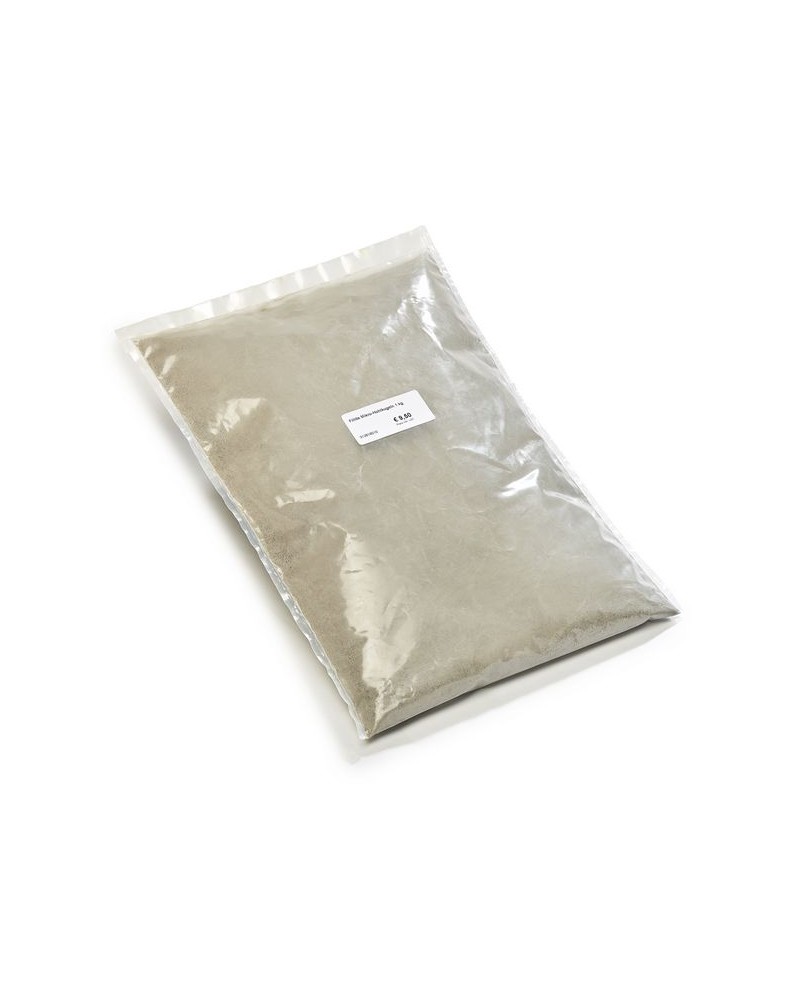
Fillite filler / hollow microspheres
All prices incl. VAT, plus shipping costs.
For deliveries to countries other than Germany
the final prices may change in the checkout.
MORE INFO
We deliver fast - Postage free from 150 € (DE) - 60 days right of return - mail@bildhau.de - Tel.: +49 (0)221-99874700


All prices incl. VAT, plus shipping costs.
For deliveries to countries other than Germany
the final prices may change in the checkout.
MORE INFO
Füllstoff aus Aluminiumsilikaten für Epoxid-, Polyurethan-, Polyester- & Acrylharze, Silikon, Gips, Beton, Zement u.a.
Fillite besteht aus keramischen Mikro-Hohlkugeln von geringer Dichte. Mit diesem sehr leichten Füllstoff können Sie z.B. Gießharze andicken, um Pasten und Beschichtungsmassen herzustellen. Durch Beimengung von Fillite Mikro-Kugeln erhalten Sie aber auch einen leichteren Gießling bzw. leichtere Gießformen und Sie benötigen z.B. weniger Gießharz bei gleichem Volumen. Die Zugabe von Fillite mindert außerdem die Schrumpfung.
Fillite eignet sich als Füllstoff für verschiedene Materialien wie Epoxidharze, Polyurethanharze (PUR), Polyesterharze, Acrylharze, Silikon, Gips, Beton, Zement. Aufgrund der stabilen Hohlstruktur lässt sich Fillite z.B. mit Werkzeugen für die Metallbearbeitung sehr gut schleifen. In Verbindung mit Gießharzen ist Fillite wasserdicht.
ANWENDUNG
Da es sehr darauf ankommt, mit welchem Gießharz bzw. mit welcher Gießmasse welcher Konsistenz gearbeitet wird und wie fest bzw. flüssig die zu gießende oder spachtelnde Masse im Ergebnis sein soll, können wir nur grobe Hinweise zum Mischungsverhältnis geben. Wir empfehlen, das Kunstharz bzw. die Gießmasse nach und nach soweit mit Fillite zu füllen, bis die gewünschte Konsistenz erreicht ist. Bevor Sie große Mengen Material anmischen, machen Sie eine Probe mit einer kleinen Menge.
Zur groben Orientierung:
Mischungsverhältnis für Gießharze: 50 - 80 Gewichtsanteile Fillite pro 100 Gewichtsanteile Harz
Mischungsverhältnis für Spachtelmassen & Pasten: 150 - 300 Gewichtsanteile Fillite pro 100 Teile Harz
Die relativ hohe Dichte des Produkts sorgt für eine begrenzte Staubbildung beim Mischen. Es wird jedoch empfohlen, mit einer Staubabsaugung oder einer geeigneten Feinstaubmaske zu arbeiten. Die Verwendung einer geeigneten Feinstaubmaske ist auch erforderlich, wenn das ausgehärtete Produkt weiterbearbeitet und z.B. geschliffen wird.
TECHNISCHE DATEN (statistische Ermittlung):
Farbe: grau
scheinbare Dichte: 0,40 g/cm³
tatsächliche Dichte: 0,70 g/cm³
durchschnittliche Partikelgröße: 200 - 250 μm
Einstufung gemäß Verordnung (EG) Nr. 1272/2008: Das Produkt ist gemäß den GHS/CLP Richtlinien nicht als gefährlich eingestuft und nicht kennzeichnungspflichtig.